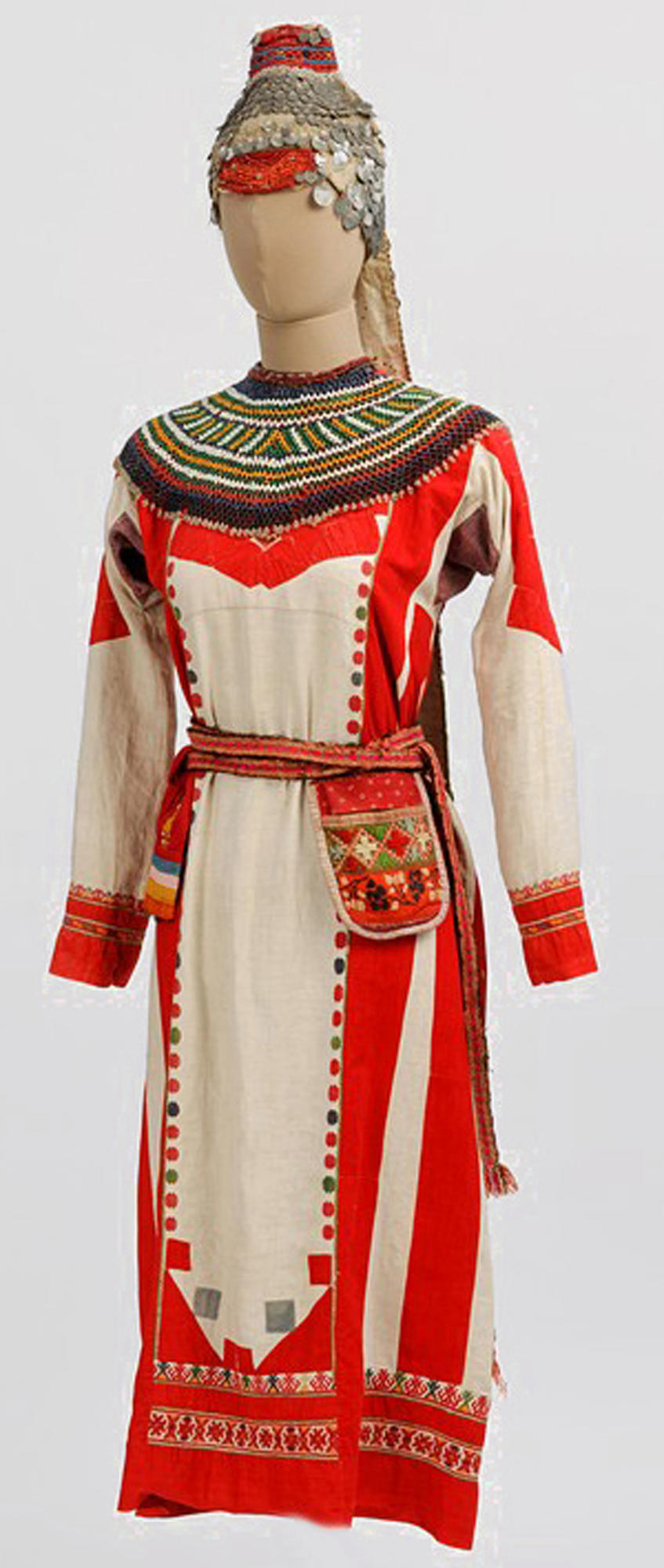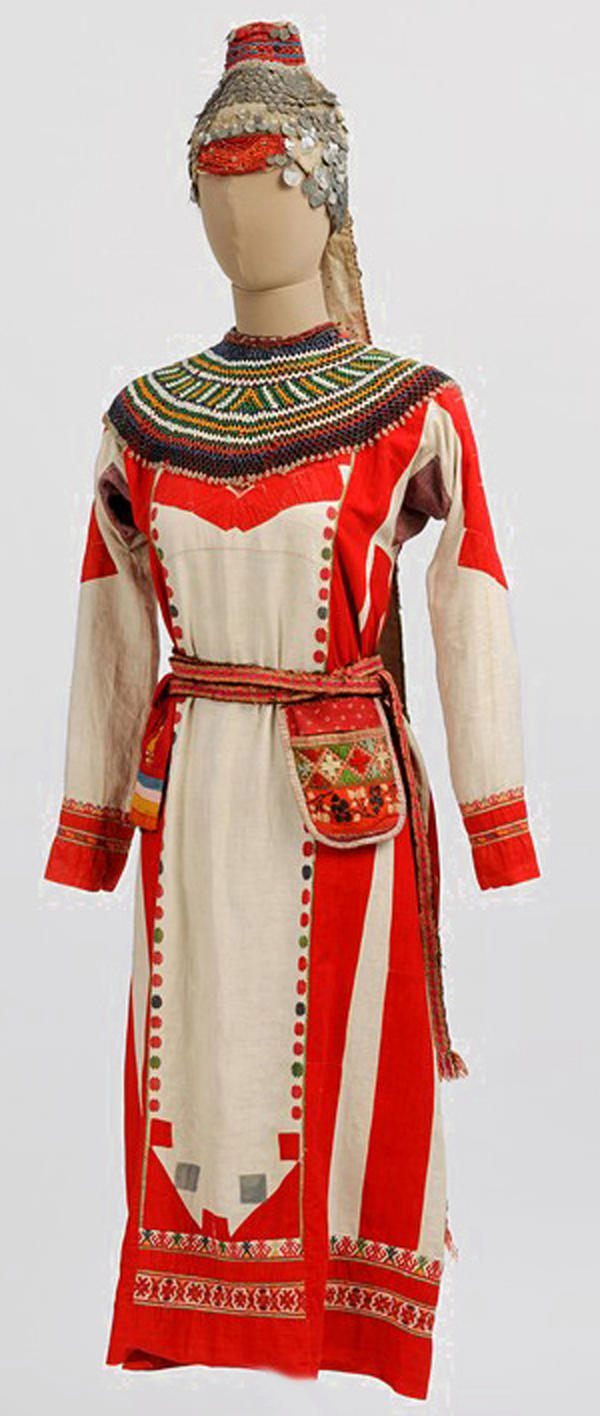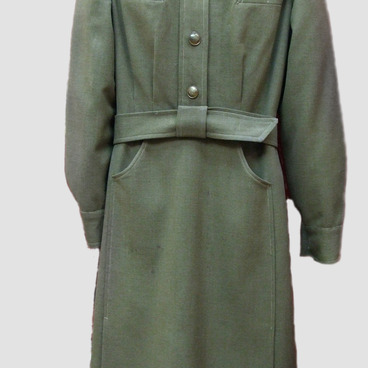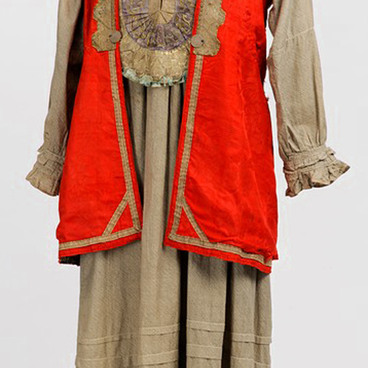This National Chuvash Women’s Outfit is made up of a shirt, a belt with a small dainty purse decorated with charms. The outfit is completed with a headdress and beaded collar. The Kepa-Shirt is sewn by hand, using white homespun canvas. It has a similar cut to a tunic. The collar is covered with a colorful fabric, whilst the lower part of the collar is covered with red calico. The chest, back and sleeves are decorated with a geometric pattern made up of strips of calico fabric. Striped linen is attached under the sleeves. The chest, cuffs and longitudinal seams are covered in diagonal stitching, whilst the hem is embroidered with different colors. A yellow silk ribbon is attached to the shoulders. This festive outfit belonged to a peasant woman in the village of Chuvashskaya Kulatka, Saratov province.
The belt is woven from crimson, brown and green wool. A small dainty purse, made from strips of homespun canvas, multi-colored satin and calico is attached to the belt. It is embroidered with wool on its front side, with oblique and cross-stitch patterns used. The Sara — a pendant attached to the belt - is made of two rectangular pieces of canvas, covered with satin. Its front is decorated with oblique wool embroidery. The ends of the pendant are trimmed with calico and decorated with stripes of braided and sequined silk ribbons. The Sara was given to the museum from the village of Belaya Gora, Saratov province.
The headdress — called a ‘Khushpu’ looks like a truncated cone cap with a ‘tail’ — a long rectangular strip of canvas which runs down the wearer’s back. There are decorative earmuffs on both sides. The cap and ‘tail’ are covered with beads and small metal coin-like plates. Small red beads are attached to the tail. The ‘tail’s’ burgundy-colored fringe has been partially lost. Even married women were supposed to wear these headdresses in the past. This headdress was worn in the village of Neverkino, Saratov province.
The beaded collar is in a semi-circle. It is woven like lace, with many different colors of beads. The collar also came from the village of Neverkino, Saratov province.
The belt is woven from crimson, brown and green wool. A small dainty purse, made from strips of homespun canvas, multi-colored satin and calico is attached to the belt. It is embroidered with wool on its front side, with oblique and cross-stitch patterns used. The Sara — a pendant attached to the belt - is made of two rectangular pieces of canvas, covered with satin. Its front is decorated with oblique wool embroidery. The ends of the pendant are trimmed with calico and decorated with stripes of braided and sequined silk ribbons. The Sara was given to the museum from the village of Belaya Gora, Saratov province.
The headdress — called a ‘Khushpu’ looks like a truncated cone cap with a ‘tail’ — a long rectangular strip of canvas which runs down the wearer’s back. There are decorative earmuffs on both sides. The cap and ‘tail’ are covered with beads and small metal coin-like plates. Small red beads are attached to the tail. The ‘tail’s’ burgundy-colored fringe has been partially lost. Even married women were supposed to wear these headdresses in the past. This headdress was worn in the village of Neverkino, Saratov province.
The beaded collar is in a semi-circle. It is woven like lace, with many different colors of beads. The collar also came from the village of Neverkino, Saratov province.



